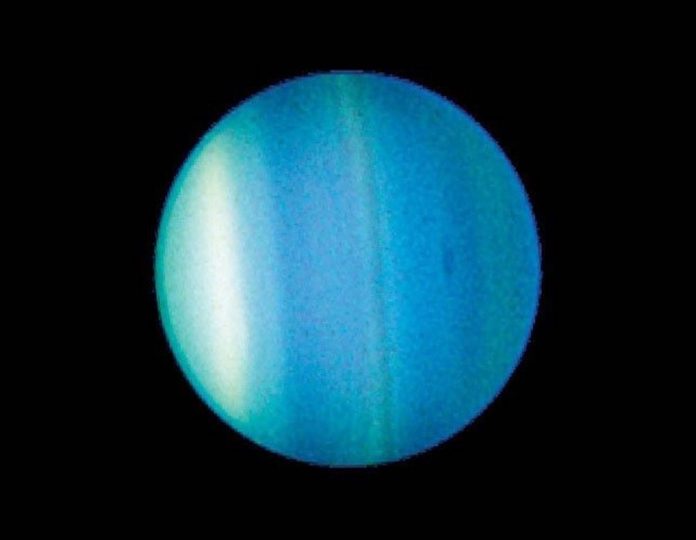
In the vast expanse between Uranus and Neptune, a team of researchers have uncovered something really quite extraordinary, a minor planet that has been locked in precise gravitational manouevres with Uranus for at least a million years.
This discovery sheds new light on the complex dynamics that govern our Solar System’s outer reaches.
The object in question, designated 2015 OU₁₉₄, belongs to a class of small bodies called Centaurs, rocky and icy objects that orbit between Jupiter and Neptune.
What makes this particular Centaur special is its remarkably stable relationship with Uranus, locked in what is known as a 3:4 mean motion resonance.
This means that for every three orbits 2015 OU₁₉₄ completes around the Sun, Uranus completes exactly four.
This precise mathematical relationship creates a gravitational partnership that keeps the two objects in a stable dance, preventing them from colliding or drifting apart.
The discovery came about through detective work with archival observations.
Researchers led by Daniel Bamberger from the Northolt Branch Observatories in Germany, located additional observations of 2015 OU₁₉₄ from 2017 and 2018, extending the object’s data points from just one year to 3.5 years.
This longer observation period was crucial for understanding the object’s true orbital behavior.
Computer simulations revealed the remarkable stability of this relationship. The resonance has remained stable for at least 1,000 years in the past, probably even 1 million years and is predicted to continue for another 500,000 years into the future.
This longevity suggests that the gravitational partnership formed early in our Solar System’s history and has persisted through countless changes.
What makes this discovery particularly significant is that no objects has previously been found in resonance between the orbits of Uranus and Neptune.
It’s a region of space, while containing many small bodies, that appears to lack the kind of stable orbital relationships commonly found elsewhere in the Solar System.
The researchers didn’t stop with just one object though. Their investigation uncovered additional candidates, including 2013 RG₉₈, which also appears to maintain this same 3:4 resonance with Uranus for several hundred thousand years.
A third candidate, 2014 NX₆₅, shows strong gravitational influence from Neptune, suggesting the complex interplay of forces in this region.
The existence of these Uranus resonant objects suggests that similar relationships may be more common than previously thought.
As our survey capabilities improve and we discover more objects in the outer Solar System, we may find that these gravitational partnerships are common and fundamental to understanding how small bodies are distributed throughout the region.
Written by Mark Thompson/Universe Today.



